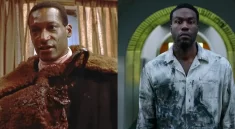when Horror Yearbook – El Gran Maja continues to captivate art lovers and haunt skeptics alike. Found in the Prado Museum in Madrid, this enigmatic artwork by Francisco Goya draws curious glances not only for its subject’s beauty but also for the unease it provokes. El Gran Maja portrays a reclining woman whose gaze is unnervingly direct. Many visitors have reported a strange sensation as if being observed by her, long after leaving the gallery. While museums often inspire quiet awe, the experience of standing before this painting elicits something different—an intense psychological response. Some art historians argue that the composition of the eyes triggers this reaction, while others point to deeper symbolic elements tied to Goya’s dark worldview. Regardless of explanation, one fact remains clear: El Gran Maja is not just admired but felt, and the feeling is not always comfortable.
Goya’s Shadows: The Hidden Layers of El Gran Maja
The second glance at El Gran Maja often reveals more than expected. At first, viewers see a seemingly relaxed subject, but closer inspection invites suspicion. The Real Academia de Bellas Artes, where Goya studied, influenced his embrace of light and shadow—both literally and thematically. El Gran Maja came from a period in Goya’s life marked by illness, political upheaval, and rumored disillusionment with humanity. It is in this psychological climate that El Gran Maja was born. The boldness of her gaze contradicts her passive pose, making her presence feel dominant rather than inviting. In the context of Goya’s darker works, some believe El Gran Maja conceals secrets—emotional, political, or even occult. Conspiracy theorists have suggested hidden symbols within the folds of her dress or the peculiar coloring of her eyes. While the Prado officially dismisses such claims, the painting continues to draw those searching for more than beauty.
“Read about: Was Frankenstein Real? Historians Uncover Shocking Origins of the Monster Legend!”
The Museum Whispers: Visitor Experiences Around El Gran Maja
Some describe it as a chill down the spine. Others report a sudden urge to look over their shoulders. In recent years, museum logs and online forums have gathered testimonials from individuals who felt an unsettling energy near El Gran Maja. Tour guides recount guests who refuse to stand too close, claiming the painting watches them. Even skeptics begin to second-guess themselves when standing alone in the room. While these accounts lack empirical proof, the frequency and similarity of the stories spark intrigue. Staff at the Prado do not officially acknowledge anything paranormal, yet they rotate guards near the gallery more often than other rooms. One former employee described hearing faint footsteps behind them while closing the exhibit. Psychologists explain these reactions as responses to lighting, eye contact, and emotional suggestion, but fans of the supernatural prefer a more sinister theory: El Gran Maja sees more than we do.
“Read more: How to Make Chicken Cream Soup So Delicious, Even Restaurants Will Be Jealous”
A Portrait Wrapped in Scandal and Silence
The mysterious portrait was believed to be commissioned in secret, with whispers surrounding the identity of the woman depicted. Some suggest she was Pepita Tudó, the mistress of Manuel Godoy, while others speculate she belonged to Spain’s royal circle. The nude version, known as La Maja Desnuda, remained hidden for decades due to its provocative nature. Its clothed counterpart still carries echoes of that scandal. Goya never revealed the true purpose behind either painting, and the subject’s anonymity adds another layer of eeriness. Over time, interpretations shifted from sensual admiration to deep psychological analysis. Today, many wonder if the work represents more than a mere portrait—perhaps a message, a warning, or even a symbolic expression. Some even claim the artist poured emotion so intense into the canvas that it lingers in the room. Her gaze was meant to capture attention, but what if it holds something far more unsettling?
From Canvas to Urban Legend: The Growing Myth of El Gran Maja
Social media platforms have played a surprising role in reigniting the mystery of El Gran Maja. Short videos and photos claiming to show subtle movement or light changes in the painting circulate widely. Hashtags such as #HauntedMaja and #EyesThatFollow trend after museum visitors upload their eerie experiences. Urban legends now attach themselves to the artwork, with tales of dreams after seeing her or unexplained tech malfunctions near the gallery. The myth continues to evolve. Some claim that the painting must not be viewed alone. Others say she chooses certain people to haunt. Art historians push back against sensationalism, but even they admit that El Gran Maja’s allure goes beyond technique. She has become a cultural icon of intrigue and mystery. Whether psychological or supernatural, the painting has taken on a life of its own. One thing is certain: El Gran Maja refuses to be forgotten.



